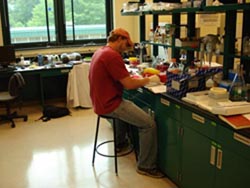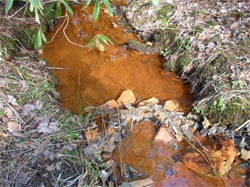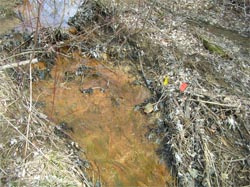Karatan Lab
Jonathan Pitchford
Appalachian State University
Department of Biology
Rankin Science North
319 (Office), 303 (Lab)
828-262-6742

Understanding impacts of metal pollution on macroinvertabrate and microbial communities in freshwater streams
Anthropogenic disturbance in the Appalachian Mountains, including the processes of road building, mining, and urbanization, has become increasingly common due to the demand for, and limited supply of, usable land. Many areas in Watauga County, North Carolina, currently being developed for residential and commercial purposes are adjacent to small tributaries and wetlands, thus placing severe stress on these ecosystems. An initial investigation of a tributary in the New River watershed in Watauga County indicated that anthropogenic activity had altered the physical and biological components and that certain portions of the tributary meet the criteria of a “disturbed” stream, thus further research into the implications of these disturbances may help in prescribing proper treatment and future management systems like these.
An alteration in the physical habitat of a tributary elicits a bottom-up effect on the biological community, where abiotic factors (i.e. temperature, pH, iron concentrations) determine the diversity and distribution of biotic communities . For example, increasing the concentration of naturally occurring metals can result in shifts in biofilm communities from algae, protists, and diatoms to metal depositing bacteria. Furthermore, chemical and biological metal deposition negatively impacts substratum quality upon which benthic macroinvertebrate communities depend, oftentimes eliciting species specific responses. Graded responses by benthic macroinvertebrates to metal concentrations allow insect community structure to act as an index of metal pollution in a given stream.
My research at Appalachian State has focused on looking at the effects of metal pollution on stream insect and microbial communities.
 Figure 1. Metal impacted stream
Figure 1. Metal impacted stream
Figure 2. Unimpacted stream 
This project has been conducted in collaboration with Michael Windelspecht in the Department of Biology.